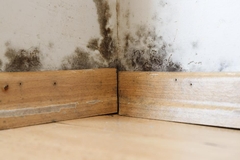
If you've ever encountered a dank, musty smell engulfing your house or seen dark patches spread across walls, chances are you've been rudely introduced to mold. Left unchecked, mold can escalate beyond a mere nuisance, causing structural damage and health issues. This is where mold remediation, a specialized area of the restoration industry, comes into play.
Mold Remediation: An Overview
Mold remediation involves the cleanup and elimination of mold, particularly strains hazardous to human health. This process is a meticulous task requiring expertise, to ensure complete removal and prevent recurrences. According to Dri Pro Restoration, an acclaimed name in the restoration industry, the key steps in mold remediation include identifying the mold, containing the affected area, filtering the air, removing the mold, and replacing the damaged structures.
Why is Mold Remediation Crucial?
Mold can pose serious health risks, including respiratory issues, allergic reactions, and in severe cases, conditions like pneumonia. Additionally, mold feeds on organic material such as wood, ruining furniture, and harming the structural integrity of a property. Given these consequences, mold remediation is crucial.
Identifying the Mold
In any remediation effort, initial assessment is a vital first step. Inspectors assess the extent of the mold spread, the moisture source, and the mold species. While the infamous black mold is often singled out, other species like Cladosporium, Penicillium, and Aspergillus can also be harmful. Dri Pro Restoration emphasizes the importance of a thorough investigation, allowing for an effective remediation plan.
Containing the Affected Area
Upon identifying the mold, remediation experts commence containment. This involves closing off the affected area to prevent mold spores from spreading during removal. Guided by protocols such as negative air pressure and physical barriers, experts ensure the mold is confined.
Air Filtration
Air filtration is paramount in remediation to capture the microscopic mold spores in the air. Most remediation services use advanced filtration equipment such as "air scrubbers" and HEPA vacuums, limiting the spread during the cleanup process.
Removing the Mold
Now comes the crucial part– the actual removal of the mold. Depending on the extent of the mold, the damage it's caused, and the surfaces it’s on, different treatments are employed. This can range from antifungal treatments to discarding mold-infested materials. Importantly, Dri Pro Restoration assures that every restored piece meets or even exceeds the original state.
Structural Repair and Replacement
Post-removal, experts replace the damaged structures and belongings. Whether it’s a segment of drywall, a piece of furniture, or an entire room that needs restoring, a professional remediation service like Dri Pro Restoration can bring your property back to its pre-mold condition, or better.
Conclusion
Mold remediation might seem a daunting process, but with expert help, it's surmountable. Companies like Dri Pro Restoration, with their comprehensive approach to mold remediation, can help protect your properties from the havoc wrought by mold, ensuring a cleaner, healthier environment.
Remember, mold infestation isn't just a property issue, it’s a health concern. So, don't hesitate or delay: Take action today for a mold-free, safe tomorrow!